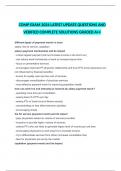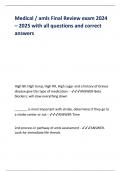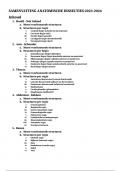Exam (elaborations)
Summary NR 602 Week 4 Midterm Review Signs of pregnancy (presumptive, probable, positive)
- Course
- Institution
Signs of pregnancy (presumptive, probable, positive) Presumptive signs of pregnancy — possibility of pregnancy Amenorrhea (no period) Nausea — with or without vomiting Breast enlargement and tenderness Fatigue Poor sleep Back pain Constipat...
[Show more]












